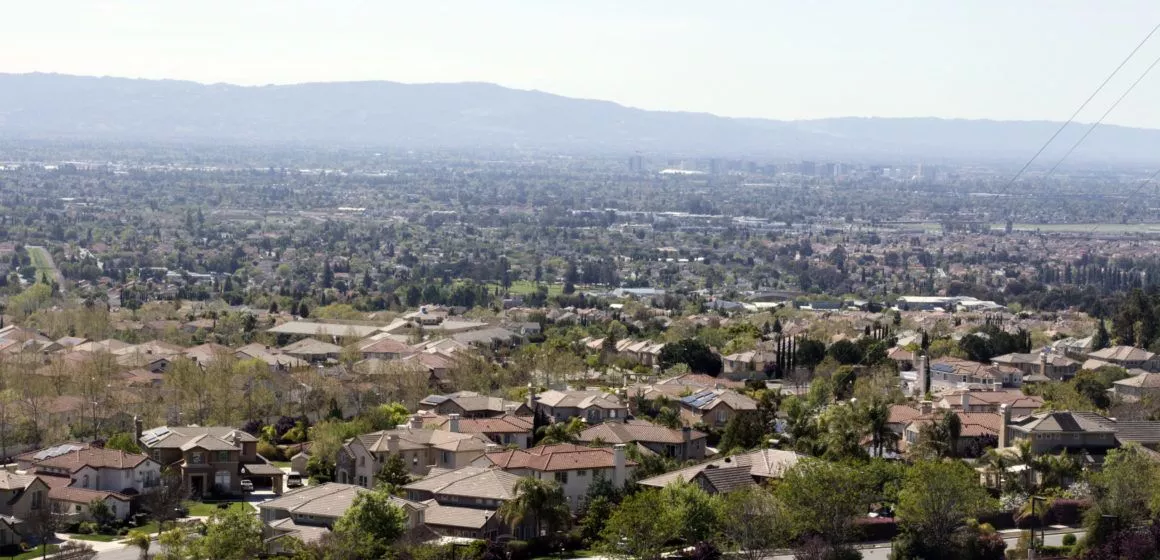“Things have been really bad for low income renters in this area,” Tom Murphy, SV@Home Communications Manager, told San José Spotlight. The organization advocates for policies and programs to increase the supply of affordable housing. “This housing report is a good indication of how bad things are for people.” Right now, San Jose and cities around the county are planning for homes to meet the needs of residents at all income levels. This Housing Element process is a critical time to get involved in your city, and help make sure plans are feasible, and elevate the housing needs of all segments of the community!
BY: Tran Nguyen┃San José Spotlight
PUBLISHED: July 28, 2022
In the heart of Silicon Valley, an individual making minimum wage needs to work nearly four hourly jobs to pay the rent.
A new report, conducted by the National Low Income Housing Coalition, finds housing costs in the nation are rising to unreachable levels for many—especially those working minimum wage jobs. Across the nation, full-time minimum wage workers can no longer afford a two-bedroom rental home, the report says.
In San Jose, where the minimum wage is $16.20, a worker needs 3.7 jobs to cover the cost of a two-bedroom apartment, the report says. As of the end of July, Zillow shows the median rent for two-bedroom apartment in San Jose lists for $3,150.
In a household with two income earners, both workers still need two minimum wage jobs to afford rent and utilities.
“There is no family type in Silicon Valley who can sustain themselves on minimum wage—even at the low end and without any vacation and without any savings for your college tuition,” Rachel Massaro, vice president and director of research of Joint Venture Silicon Valley, told San José Spotlight. The group analyzes regional issues affecting the economy and quality of life.
San Jose renters need to make at least $55.15 an hour—more than $114,000 a year—to afford rent without spending more than one-third of their income, the report says. Frontline workers who keep the economy going in Silicon Valley make nowhere near that amount—the average income for service workers in the region is $31,000 as of last year, according to analysis from Joint Venture Silicon Valley. This breaks down to $14.90 per hour for an individual working 40 per week annually.
“The numbers don’t add up,” Massaro said. “I hope (the numbers) will elucidate this issue for those who ever thought minimum wage was adequate.”
Yet the report says workers in the San Jose metro area make an average of $68.30 an hour—up from last year’s $52.05. But these figures don’t apply to minimum wage workers, economic experts said.
Experts said the average wage is skewed, as the region is experiencing a widening wealth gap. Massaro said a tech worker makes an average of $160 an hour, compared to a food service worker making $16.20 an hour in San Jose.
The top quarter of Silicon Valley earners hold 92% of the region’s wealth and the top 10% hold 75% of the wealth, according to analysis from Joint Venture. Those who earn the least in Silicon Valley continue to struggle to make ends meet—especially with high gas prices and record inflation, Massaro said.
In Silicon Valley, one in three households have zero or negative savings, and nearly half of children in Silicon Valley live in households that do not earn enough income to cover the family’s basic needs, according to the Silicon Valley Pain Index. The report is conducted by the San Jose State University Human Rights Institute.
Minimum wage doesn’t cut it
For the second year in a row, San Jose has landed in the top three most expensive places to rent in the nation. San Francisco tops the list, and Santa Cruz comes in second, according to the report. The San Jose metro area was No. 2 on the list last year.
Overall, California is the second most expensive state to rent in, and there’s a need for roughly 960,000 affordable rental homes in California, according to the report.
“Things have been really bad for low income renters in this area,” Tom Murphy, SV@Home spokesperson, told San José Spotlight. The organization advocates for policies and programs to increase the supply of affordable housing. “This housing report is a good indication of how bad things are for people.”
Grassroots community efforts, such as the South Bay Community Land Trust, have stepped up to help residents find stable living conditions by putting housing into a land trust for 100 years. Housing advocates are also pushing officials to preserve the affordable housing inventory, incentivize owners of vacant homes to rent out their properties and establish guaranteed income—all in an effort to address the housing crisis.
Sandy Perry, president of the Affordable Housing Network of Santa Clara County and board member of the South Bay Community Land Trust, said San Jose needs bold ideas to address the housing issue.
“(The current City Council) is not standing up to the real estate lobbyists,” Perry told San José Spotlight. “They’re really just interested in increasing rents, and they don’t care about the plight of tenants.”
Perry said the land trust aims to return housing back to its original purpose—to shelter people.
“Our objective is to decommodify as much housing as possible,” he said. “It was originally created by human beings to provide shelter, but now it’s just an investment vehicle and it’s not working.”

